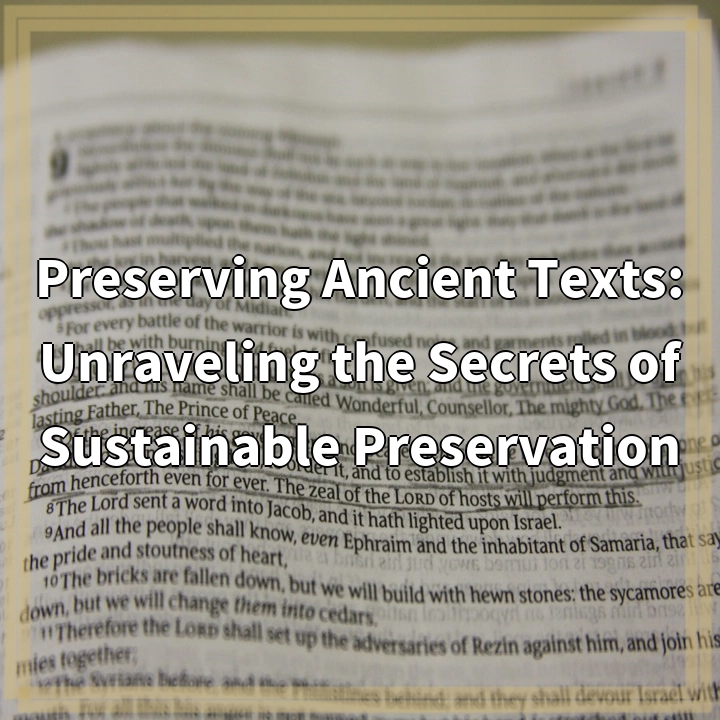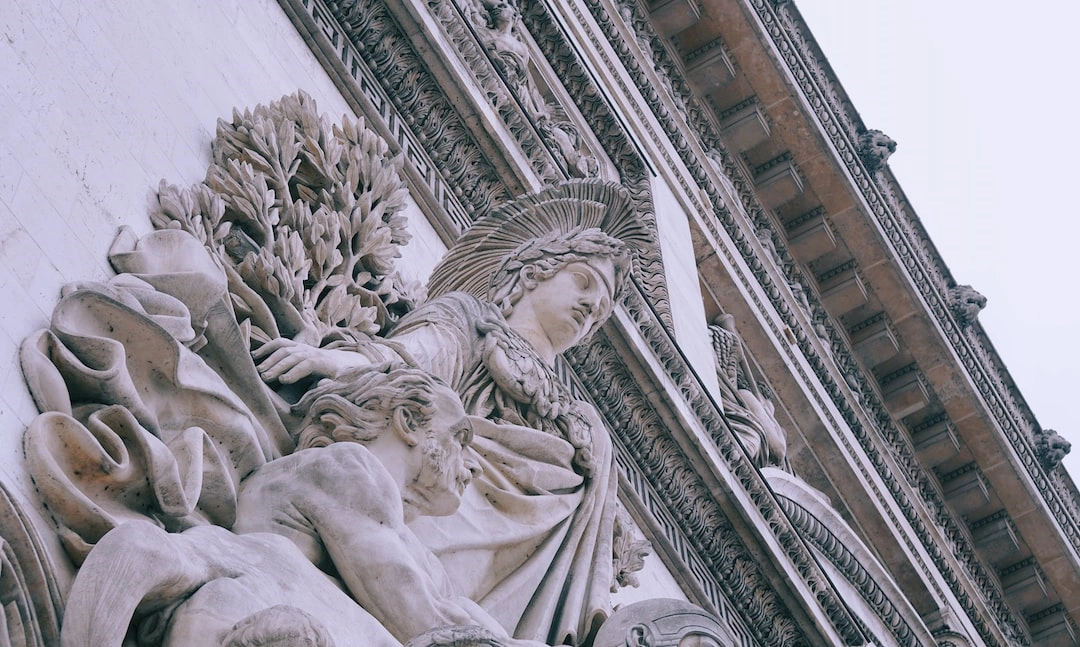
What it is:
Preserving Ancient Texts: Unraveling the Secrets of Sustainable Preservation
Real-World Problems:
1. Deterioration of Ancient Texts:
Ancient texts, such as manuscripts, scrolls, and inscriptions, are susceptible to various forms of deterioration over time. Factors like humidity, temperature fluctuations, light exposure, and pest infestations can cause irreversible damage to these valuable historical artifacts. This poses a significant challenge for preserving the cultural heritage they hold.
2. Limited Resources:
Preservation efforts require substantial resources, including funding, specialized equipment, and trained professionals. However, many institutions and organizations dedicated to ancient text preservation face financial constraints and resource limitations, making it difficult to implement comprehensive preservation strategies and techniques.
3. Technological Obsolescence:
The preservation of ancient texts often involves the use of advanced technologies, such as digitization techniques, imaging technologies, and conservation materials. However, the rapid pace of technological advancements raises concerns about the long-term accessibility and compatibility of digital preservation formats, as well as the potential obsolescence of preservation tools and methods.
4. Fragmented or Incomplete Texts:
A common challenge in preserving ancient texts is dealing with fragmented or incomplete manuscripts. These texts may have missing sections or damaged pages, making it a complex task to interpret and preserve them accurately. Restoring and reconstructing fragmented texts while ensuring their preservation poses unique challenges to researchers and custodians.
5. Ethical Considerations:
The preservation of ancient texts often involves making decisions regarding the accessibility, display, and handling of delicate materials with cultural, historical, or religious significance. Navigating ethical considerations, such as respecting indigenous rights, religious practices, and ownership disputes, requires careful thought and collaboration with relevant communities and stakeholders.

Solutions for Sustainable Preservation:
1. Conservation Techniques:
Implementing effective conservation techniques can slow down the deterioration process of ancient texts. This includes regulating environmental conditions, such as temperature and humidity, and utilizing proper storage materials and techniques to prevent damage caused by pests and light exposure.
2. Collaborative Partnerships:
Forming collaborations and partnerships between cultural institutions, preservation experts, and researchers can help overcome resource limitations. Sharing knowledge, expertise, and funding can enable the development and implementation of comprehensive preservation strategies.
3. Digital Preservation:
Digitizing ancient texts and creating digital repositories ensures wider accessibility and long-term preservation. Using standardized file formats, metadata, and robust storage systems can address concerns about technological obsolescence and provide greater accessibility to scholars and the general public.
4. Conservation Science and Research:
Continued investment in conservation science and research plays a vital role in developing innovative preservation techniques. This includes exploring new materials, analyzing degradation patterns, and advancing imaging technologies to enhance the understanding and preservation of ancient texts.
5. Responsible Cultural Practices:
Respecting ethical considerations, such as indigenous rights, religious practices, and ownership disputes, is vital in the preservation of ancient texts. Engaging with local communities, involving stakeholders, and ensuring transparency in decision-making can help preserve cultural heritage while being mindful of sensitivities and concerns.
These solutions aim to promote sustainable preservation practices, ensuring that future generations can continue to appreciate and study the wealth of knowledge encapsulated within ancient texts.















